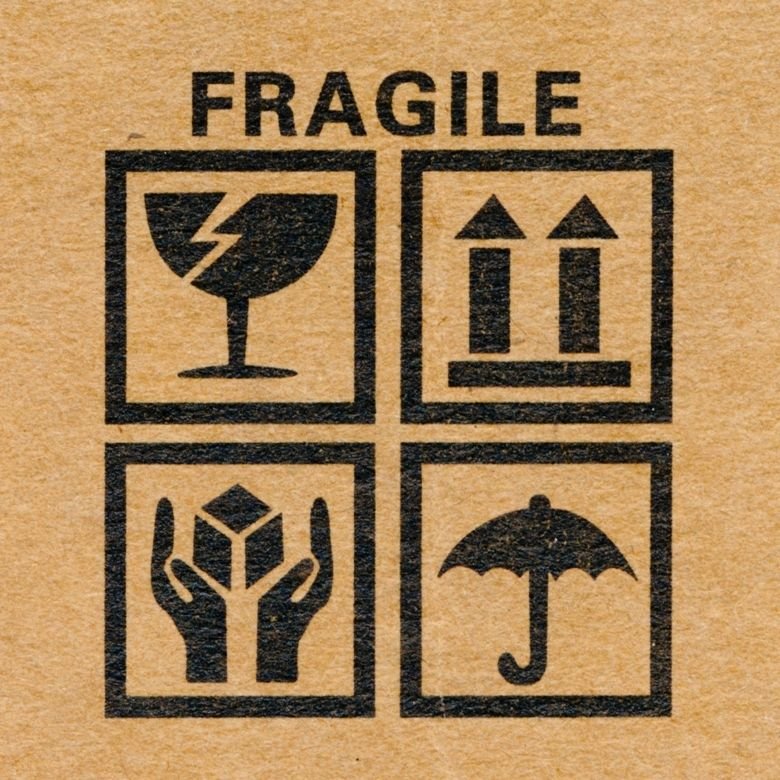Packaging is an extremely important source of information about the purpose of the product, its safety and how to sort the resulting waste. Do you know which graphic symbols you should pay special attention to? How can they help you in your everyday life?

Basic types of markings on labels
Graphic symbols on packaging are mostly universal, international symbols that communicate the same information despite language barriers. They are therefore virtually irreplaceable in a global marketplace. Their small size also allows you to optimise the use of space on the label.
The pictograms you can find on all types of commercial product packaging today can be divided into several collective categories. These primarily include:
- signs relating to quality and compliance with basic standards, e.g. the CE symbol indicating that product parameters comply with EU directives;
- graphic symbols relating to the packaging itself, particularly with regard to how it should be handled during transport and its suitability for recycling;
- pictograms on the origin and composition of food products;
- symbols indicating various hazards related to the storage and use of the product, including dishwasher and food contact safety.
In addition, you can also find graphic symbols on many packages that refer to ethical values which are important for an increasingly wider range of consumers. These include messages about no animal testing, the vegan nature of the product or respect for fair trade principles.
Graphic symbols for the transport of products
For buyers and carriers, one of the key pieces of information on packaging is the pictograms indicating how the product should be handled during transport. These can be found primarily on goods requiring special care. These include the following graphic symbols:
- ‘Protect from moisture’ – umbrella with raindrops;
- ‘Careful, fragile’ – a broken glass;
- ‘Top, do not turn over’ – two arrows pointing upwards;
- ‘Open here’ – triangular arrow;
- ‘Protect from heat’ – a house with the sun.

Eco-label on packaging
A very important group of signs on labels are symbols that make it easier to sort packaging waste and indicate its recyclability. The basic graphic symbol in this category is a triangle composed of three arrows. This can be accompanied by a numerical code for the material from which the packaging is made.
In the case of multi-material packaging, a symbol of the form is used: C/dominant material, e.g. C/PAP. Additionally, plastics should be identified with abbreviations such as PET, HDPE, PVC or PP. Biodegradable packaging is identified by a pictogram in the form of a loop with a double leaf.
The ecological graphic symbols also include markings of compliance with various environmental standards. Particularly noteworthy is the ‘Blue Angel’, which indicates the comprehensive earth-friendliness of a product, from production to disposal. In the European Union, the ECOLABEL symbol confirms compliance with strict environmental standards. In Poland, its equivalent is Znak EKO (i.e. the ECO Mark). Read also about green chemistry in the PCC Group.
What do the food pictograms mean?
You can find specific graphic symbols on food packaging. Of great interest to consumers is the EU organic logo in the form of a green rectangle with a leaf composed of white stars. It certifies that a minimum of 95% of the product’s ingredients come from controlled organic cultivation.
In addition, food pictograms provide information on the food’s compatibility with individual elimination diets. They make it easy to recognise that a product does not contain gluten, lactose, GMO or phenylalanine. Graphic symbols on packaging may also indicate the kosher nature of the food or its fixation with radiation.

Graphic symbols on chemical product packaging
In accordance with the international requirements of the Globally Harmonised System of Classification and Labelling of Chemicals (GHS), packaging containing dangerous substances must bear the appropriate pictograms. These take the form of rhombuses within a red border and indicate physical, health or environmental hazards.
The simple graphic symbols let you know whether a product is flammable, explosive, corrosive or oxidising, and enable you to take the appropriate precautions. The chemical pictograms also warn of toxicity, carcinogenicity, allergenicity and adverse effects on aquatic ecosystems.
Why read the symbols on product labels?
Graphic symbols on packaging are not just a formal requirement imposed on manufacturers for market control purposes. In fact, they are addressed to the consumer, who should know and understand the basic symbolism.
There are many benefits from consciously reading and interpreting labels. First of all, you can make a better purchasing decision by choosing a safer, healthier, more ecological product. Furthermore, thanks to the information on the packaging, you are able to prevent damage to your own health and property, that of your household members and that of the wider society.
Graphic symbols also make it easier to sort waste correctly, making more of it recyclable. As a result, you save energy and money, and fewer hazardous chemicals are released into the environment.
